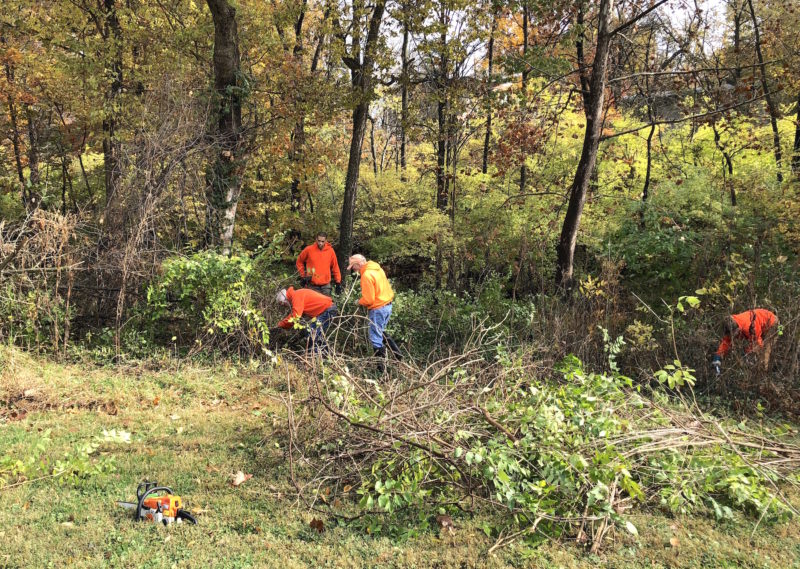
We quickly tried to alleviate some of the seed pressures from invasives that would express themselves next year. We did this by mechanically removing top growth of annuals that were in bloom such as Japanese hops and beefsteak plant, which are dominating the riparian corridor of the property. We removed a large callery pear that was full of ripening fruit that had been growing out of sight for years, depositing many of its offspring along the woodland edges, creek banks, and prairies. We’ve also been targeting wintercreeper growing up trees that are of fruiting age, removing them from adding to the future seed bank. Wintercreeper is probably by far the worst enemy in our path to getting the bottomland woodlands here on site back to a sustainable native ecosystem.

Much work has been done in previous years by staff, volunteers, and interns to remove bush honeysuckle from the west side of Deer Creek, so we have been continuing with that task in the last month. The bush honeysuckle provided the perfect growing conditions under its canopy for wintercreeper and Japanese honeysuckle to gain a foothold here. On the east side of the creek, it is primarily nothing but dense stands of mature bush honeysuckle and a wintercreeper ground layer. Growing among it are some other invasives you might recognize: burning bushes and asian privets.

The early winter weather we have been getting is closing our fall 2018 window of foliar treatments on some of these invasives. There is a long road ahead of us in the clearing of wintercreeper in the future, and restoring our bottomland woodlands to a more manageable state. With all the surrounding properties containing all these same invasive plants, there will forever be reproductive pressure from them on this property. Continued, persistent follow-up treatments will be necessary by staff and volunteers. We’ve been out with volunteers collecting many seeds of our native flora on site, as well as out at Shaw Nature Reserve, to sow in areas where invasives have been cleared.

I am extremely grateful to have gained so much experience in the restoration field from working out at Shaw Nature Reserve, and learning so much from so many of my coworkers out there. With LREC being primarily an educational site, I will also get to use my horticultural background in designing the landscape here to be interacted with by people, first and foremost, while keeping in mind its use by wildlife. Look here for future blog posts on what projects we are working on, news about the large MSD project that will be clear cutting through the property, and updates as I work on a comprehensive restoration plan for the site.
